By the early 1950s, the Canadian art world, particularly in Ontario, remained largely conservative and composed of mostly realistic depictions of Canadian landscapes. While modernist movements like Cubism, Surrealism, and Abstract Expressionism had gained traction internationally, especially in Europe and the United States, they were still seen as radical, even subversive, by the Canadian public. In Quebec, artists such as Paul-Émile Borduas and Jean-Paul Riopelle were already pushing modernist boundaries through the Automatistes, a Montreal-based group that had been active since the early 1940s. However, their influence had not yet made significant inroads in English-speaking Canada.

The seeds of Painters Eleven were planted in October 1953, when 27-year-old William Ronald, a commercial artist working at Simpsons Department Store in Toronto, organized a display titled Abstracts at Home. Ronald convinced the management of the well-established Yonge Street department store that abstract art could complement traditional furniture and boost sales for both. This installation juxtaposed abstract paintings with modern Danish and reproduction French Provincial furniture in the Simpsons department store’s windows. The show featured works by William Ronald and six other artists: Jack Bush, Oscar Cahén, Tom Hodgson, Alexandra Luke, Ray Mead, and Kazuo Nakamura.
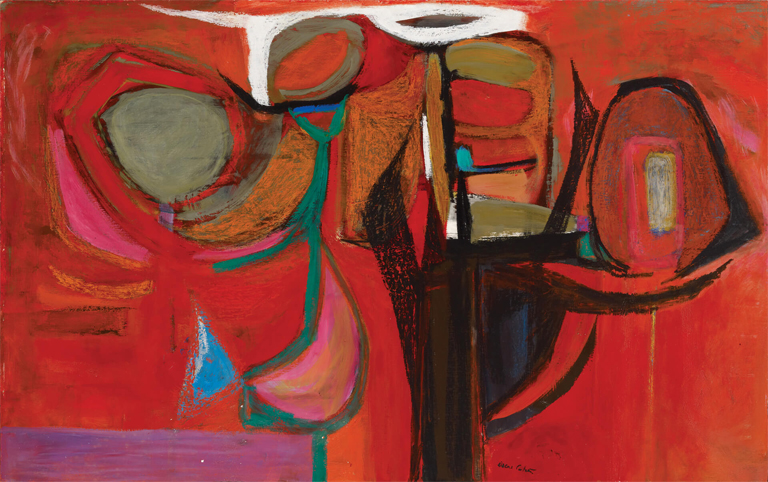
Growing Form, 1953, by Oscar Cahén (1916-1956)
Encouraged by the attention Abstracts at Home received, the group soon expanded to include four more artists, Jock Macdonald, Harold Town, Hortense Gordon, and Walter Yarwood, bringing the total to eleven members. The name Painters Eleven was proposed by Harold Town, and the group officially formed in late 1953 during a meeting at Alexandra Luke’s cottage in Oshawa.
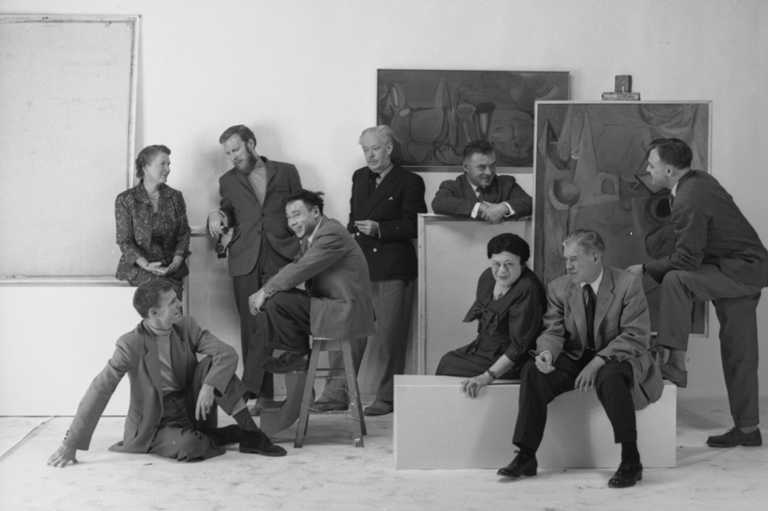
Painters Eleven at the Park Gallery, c 1957. From left to right: Tom Hodgson, Alexandra Luke, Harold Town, Kazuo Nakamura, Jock Macdonald, Walter Yarwood, Hortense Gordon, Jack Bush, and Ray Mead. William Ronald and Oscar Cahén are not present.
Unlike more unified artist collectives, such as the Group of Seven, Painters Eleven did not share a common style, manifesto, or aesthetic approach. Their only unifying commitment was to abstraction. Some, like William Ronald and Tom Hodgson, favoured gestural abstraction and bold colour, reflecting the influence of the New York School. Others, such as Kazuo Nakamura, took a more introspective approach, exploring pattern, structure, and the subtleties of tone.
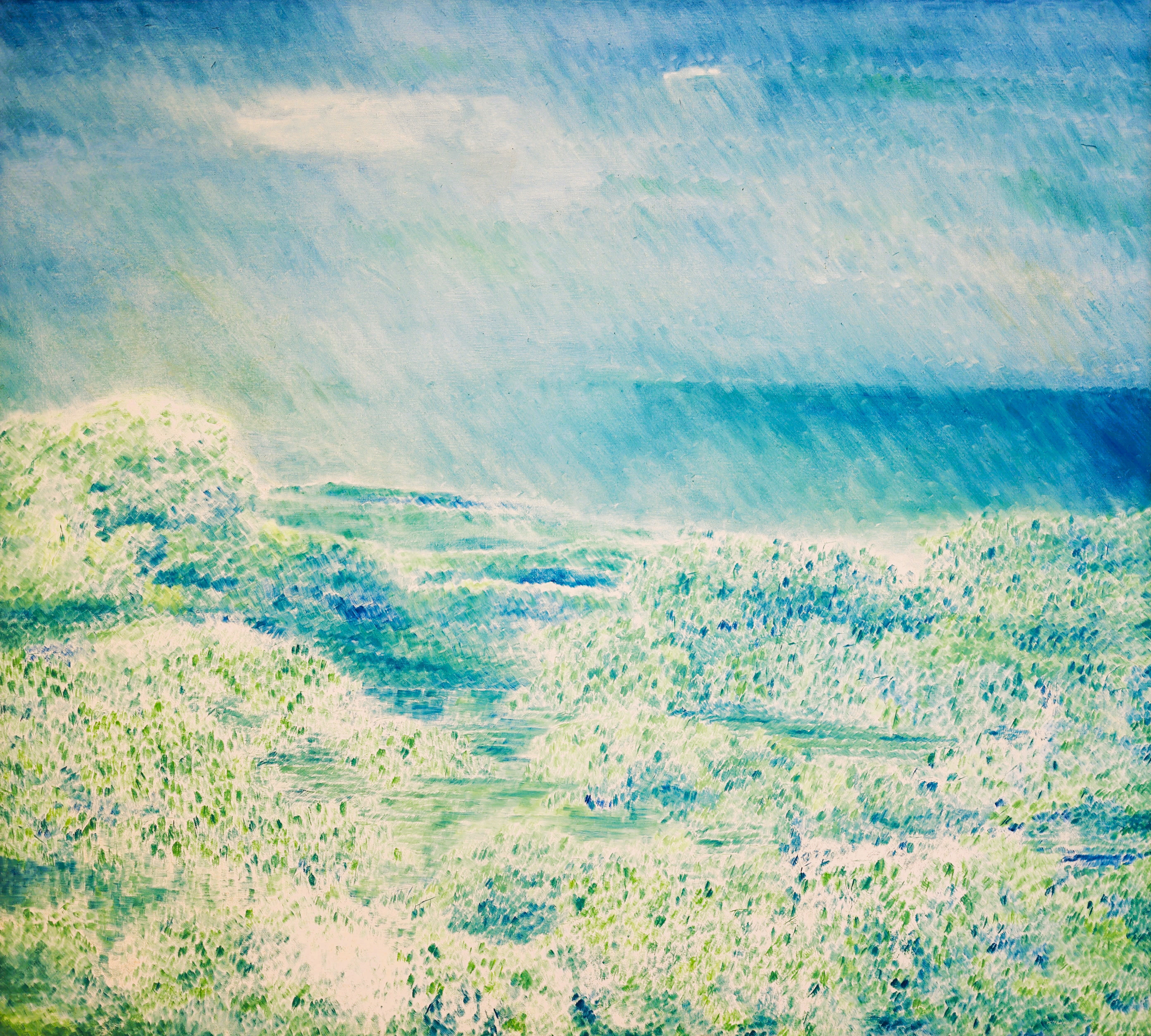
The group’s members had a collective mission to shift public perception of abstract art in Canada. Some members were self-taught; others studied at the Ontario College of Art or abroad in Europe and the United States. Several, including Gordon, Luke, Macdonald, and Ronald, had studied under the renowned German-born teacher Hans Hofmann in the U.S.
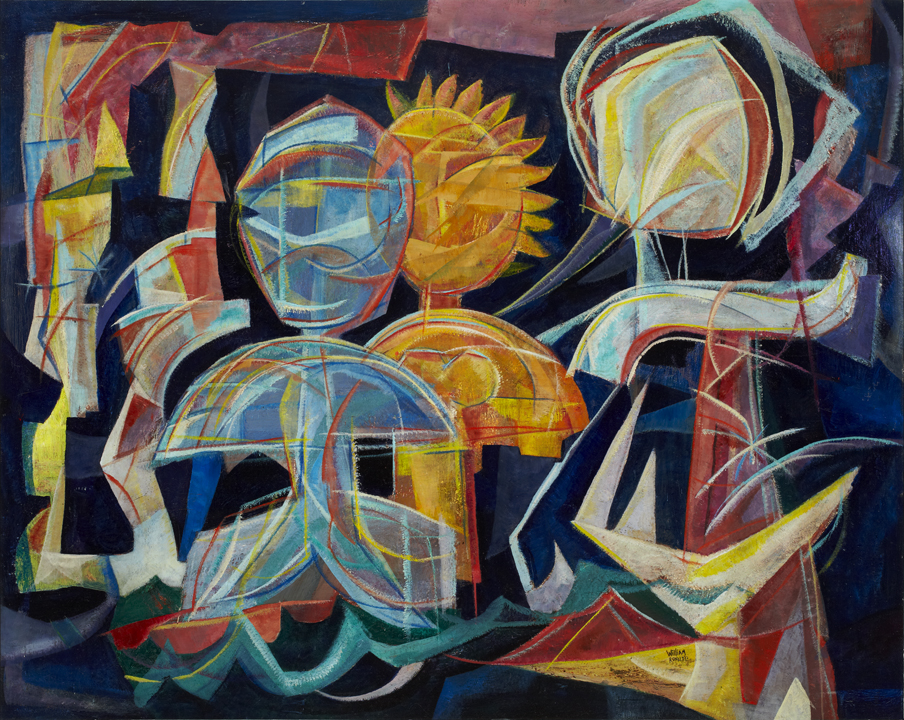 Midnight Personified, 1952, casein on masonite by William Ronald (1926–1998)
Midnight Personified, 1952, casein on masonite by William Ronald (1926–1998)The group held its first official exhibition in 1954, orgninized by Jack Bush, at the Roberts Gallery in Toronto. This was the first major commercial show of nonobjective art in Ontario. Years later, Ray Mead remembered, “we thought they’d open the doors like they do for a matinee and everyone would come pouring in,” but when the gallery opened at six, no one showed up. Town eventually persuaded a few passersby to come in for a drink, and gradually more visitors arrived, intrigued by the event even if unsure of what to expect. By the end of its two-week run, the exhibition had attracted the largest crowds the Roberts Gallery had ever seen. The reception was mixed: while the show drew large crowds, sales were modest, and the art critics' responses ranged from skeptical to dismissive. Writer Robert Fulford recalled leaving Painters Eleven’s first exhibition at age twenty-two, “with a sense of new life in Canadian art.”
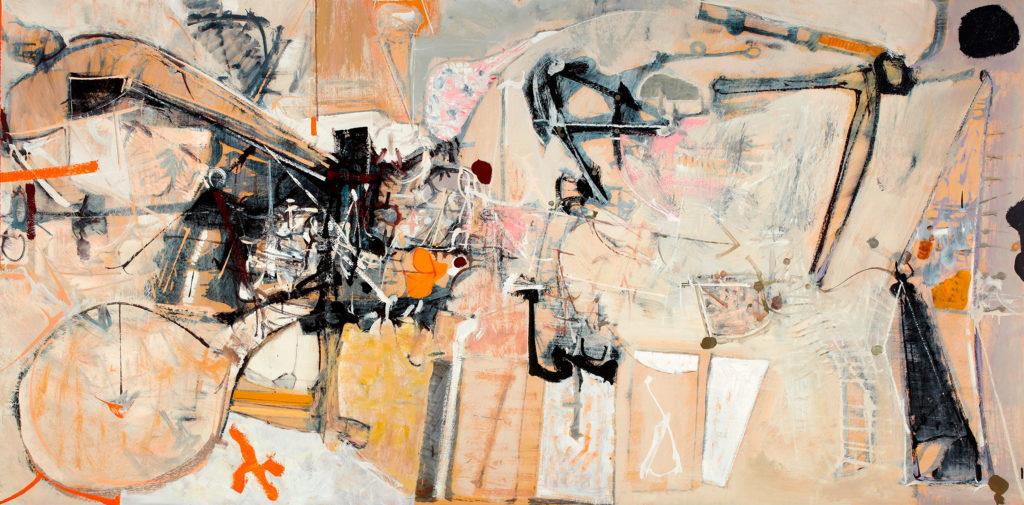
Passage Over Yesterday, 1959, oil and Lucite on masonite by Harold Town (1924–1990)
Kenneth Forbes, a prominent portrait artist who had stepped down from the Ontario Society of Artists after abstract works were included in its 1951 exhibition, led the traditionalist opposition to abstract art. Forbes harshly criticized the entirety of modern art, describing Van Gogh’s work as “clumsy, rotten junk” and abstraction as “vague gropings of the primitive man,” which he saw as an assault on civilization. He further condemned modern painting as “ugly, distorted, sadistic, grotesque, and just plain incompetent,” calling it “the greatest hoax in the history of human art.” Harold Town, never one to shy away from confrontation, fired back: “I am glad to hear from Kenneth Forbes. I thought he was dead, but had only his painting to go by.”
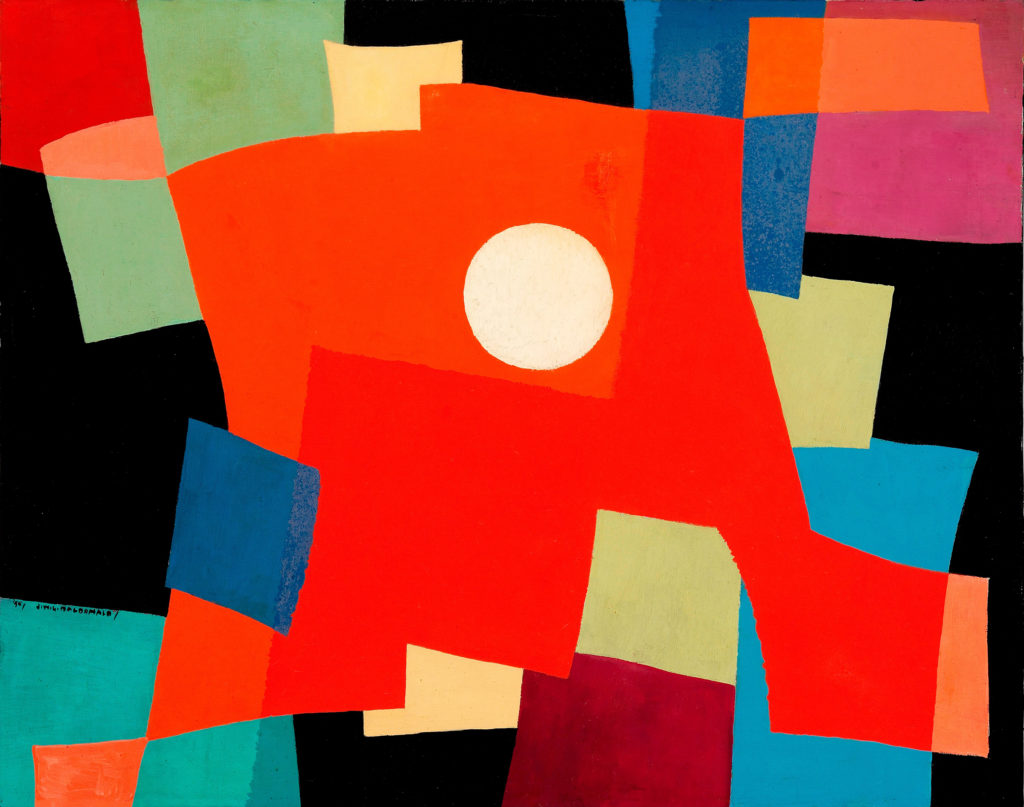
Orange Impulse, 1955, oil and graphite on canvas by Jock Macdonald (1897– 1960)
A major breakthrough came in 1956 when Painters Eleven exhibited alongside the American Abstract Artists at the Riverside Museum in New York. This was a pivotal moment for the group, as this was their first international exposure. The strongest praise came from Lawrence Campbell, a critic writing for the esteemed publication Art News:
“I think the Americans who saw the exhibitions today were surprised to find that the level of Canadian painting was comparable to American painting, as inventive, and if anything freer, more creative, and less self-conscious compared to works by the members of the American Abstract Artists.”

Their work also caught the attention of prominent American critic Clement Greenberg, who visited the group in Toronto in 1957 and gave them a rare stamp of approval. Greenberg spent several hours with each Painters Eleven member. He described Hodgson as “exceedingly good” and said Mead and Macdonald were ready for any New York gallery, a remarkable compliment for Canadian artists measuring themselves against international standards. For Jock Macdonald, a trailblazer in Canadian abstraction who had faced decades of criticism, Greenberg’s approval felt like long-awaited validation. The critic’s most significant connection was with Jack Bush, who was destined to become the most renowned Canadian painter of his generation. This marked the start of a friendship that lasted until Bush’s death twenty years later. Greenberg encouraged Bush to pursue the path he was already exploring: the purely formal colour-field painting that he became increasingly known for.
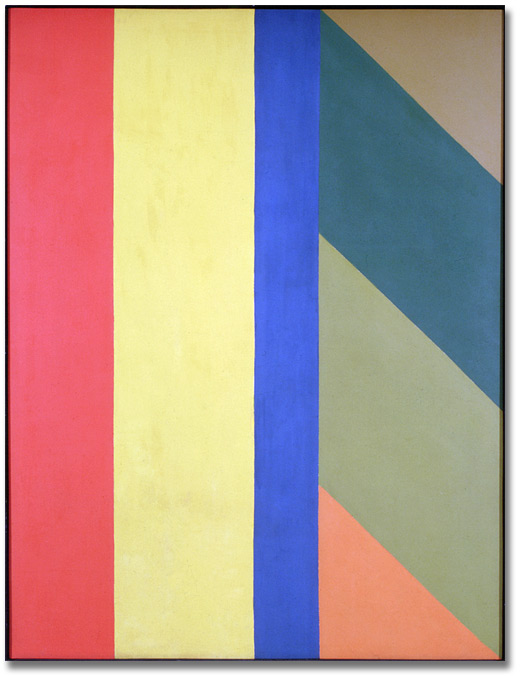
Untitled , 1967, polymer acrylic on canvas by Jack Bush (1909-1977)
In 1957, Painters Eleven were featured in an exhibition curated by the National Gallery of Canada, which solidified their place within the Canadian art scene. By this exhibition, abstract expressionism had been established in the English Canadian art world. In the late 1950s, public and critical attitudes toward abstraction in Canada had shifted. Influential Canadian critics like Robert Fulford and Pearl McCarthy promoted the group’s work, and Canadian art institutions became more open to exhibiting and acquiring abstract pieces. Many members of Painters Eleven were increasingly finding commercial and critical success, and the group’s mission, to introduce and normalize abstraction in Canadian art, was being fulfilled.
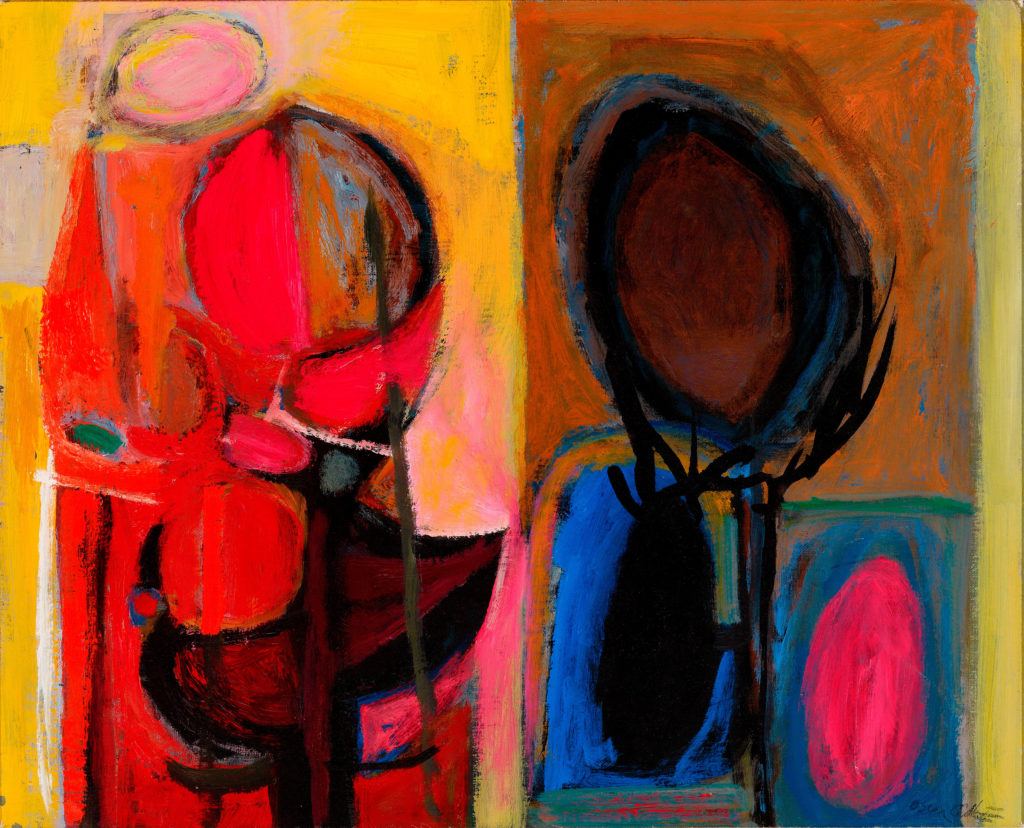
Small Structure, 1953/55, oil on canvas board by Oscar Cahen (1916–1956)
The group began to dissolve in the late 1950s. Oscar Cahén, considered by many to be the group’s most influential member, died in a car accident in 1956. William Ronald moved to New York and formally left the group in 1957. By 1960, with several members pursuing solo careers and abstract art gaining broader acceptance, the remaining members voted to disband Painters Eleven.

While their active period was relatively short, their impact is immense. Painters Eleven was the first major abstract art collective in English Canada, and their efforts helped shift public perception, making way for modernist and abstract movements to flourish in the decades that followed. The group’s members went on to have significant solo careers. Jack Bush and William Ronald, in particular, became internationally recognized. Bush represented Canada at the São Paulo Biennial in 1967 and had a major retrospective at the Art Gallery of Ontario in 1976. Kazuo Nakamura was celebrated in retrospectives in 2004 and again in 2024.
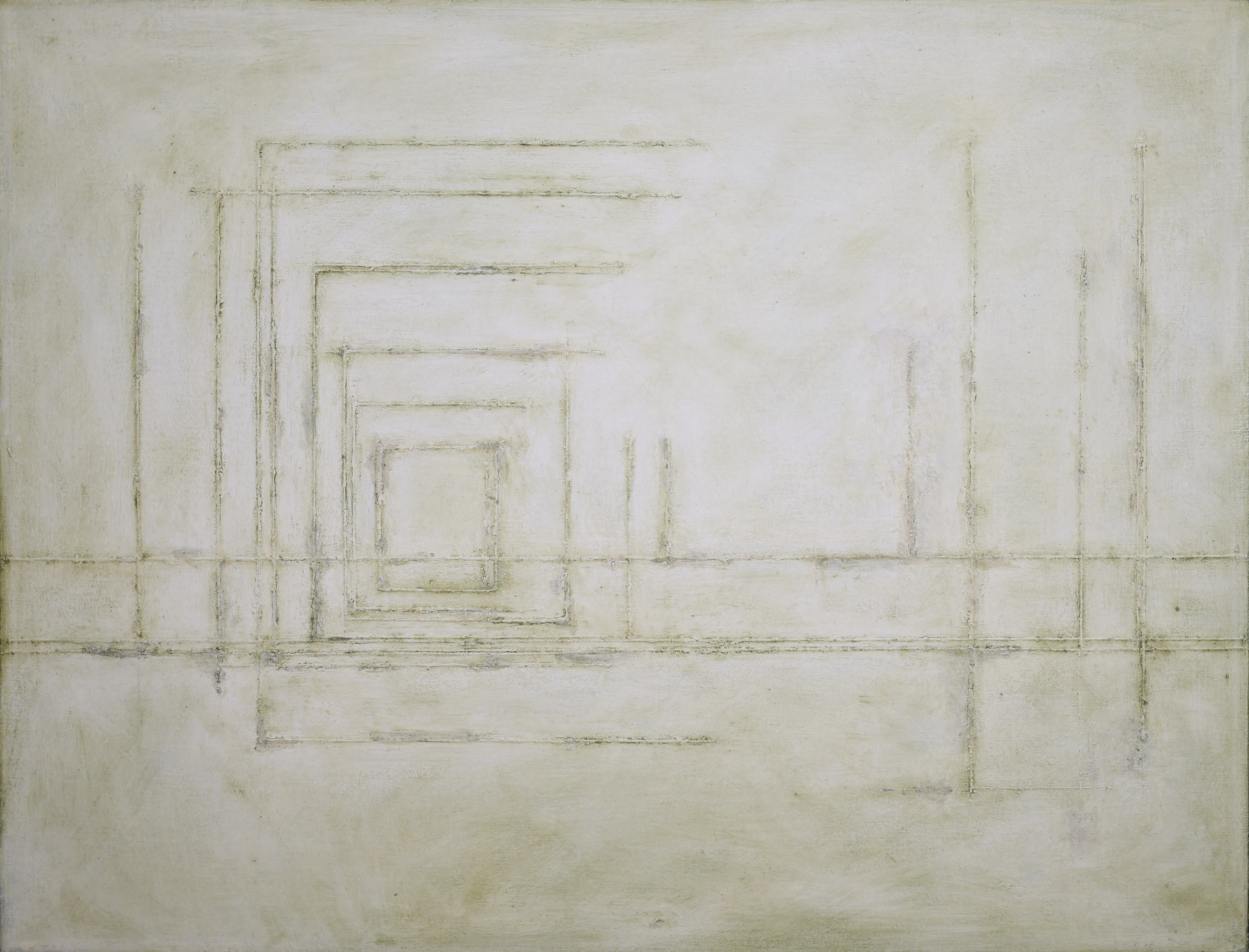
Today, their work is housed in major public and private collections across Canada, including the Art Gallery of Ontario, the National Gallery of Canada, and notably the Robert McLaughlin Gallery in Oshawa, which holds the largest public collection of works by Painters Eleven. Their influence on Canadian modern art is both undeniable and enduring.
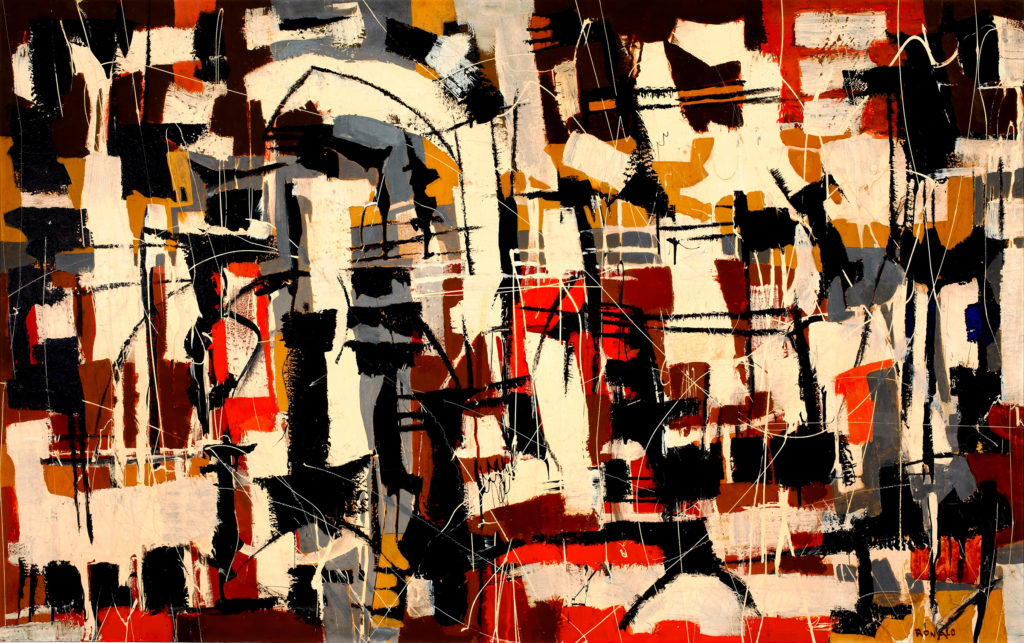 Back Through Sound, 1954, casein and duco on masonite by William Ronald (1926 – 1998)
Back Through Sound, 1954, casein and duco on masonite by William Ronald (1926 – 1998)
Consignment at Rookleys
At Rookleys Canadian Art, we are actively seeking works by Painters Eleven for consignment, offering consignment rates far lower below what auction houses charge. If you have a painting by one of the members of Painters Eleven to consign, please contact us at info@rookleys.com to discuss these opportunities further.

As in Winter, 1960, oil on canvas by Walter Yarwood (1917 – 1996)